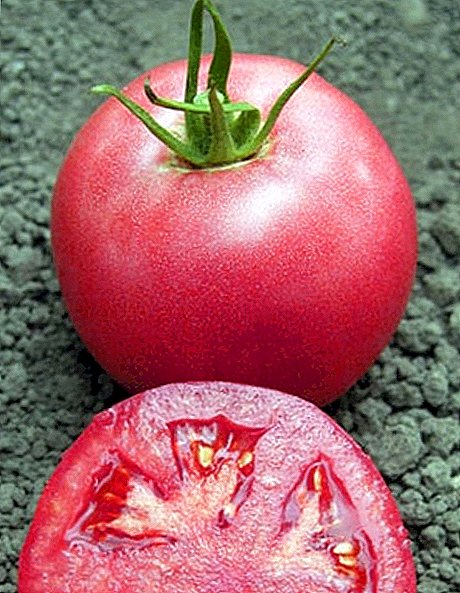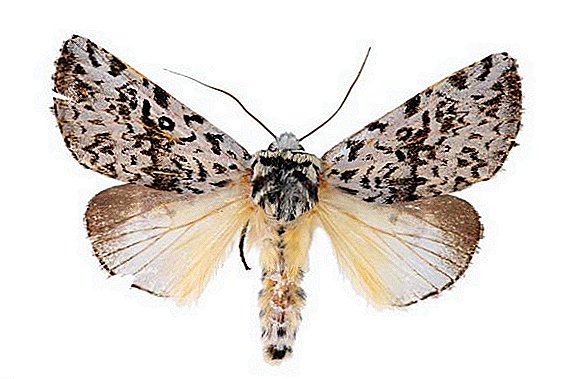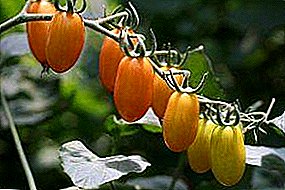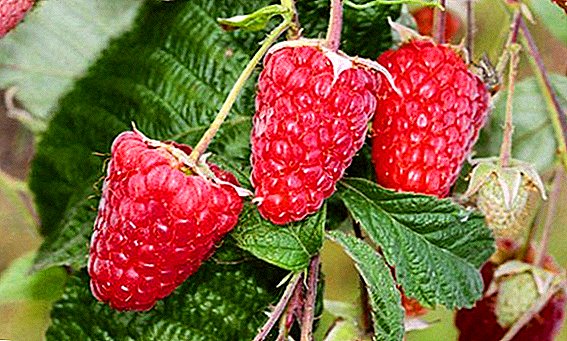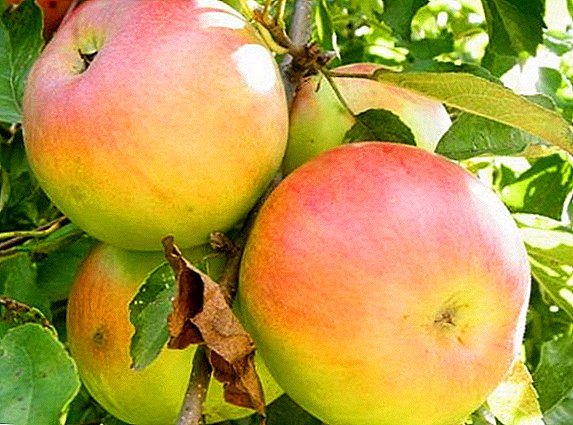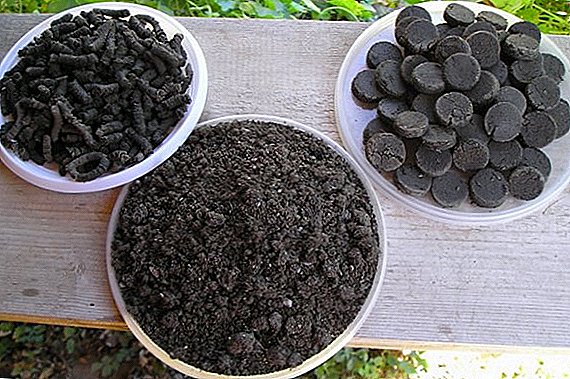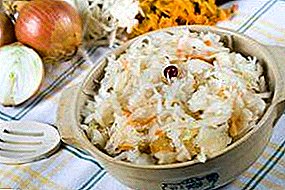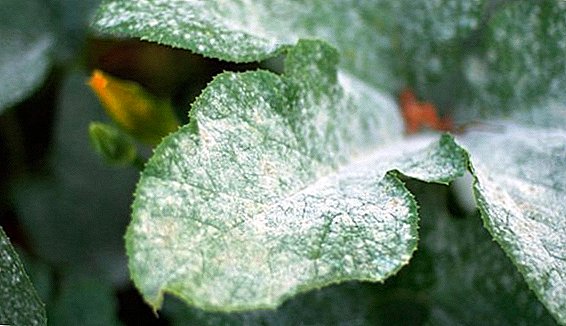 When summer becomes cold and rainy, many summer residents are concerned with the question: how to protect their beds with cucumbers from such a disease as powdery mildew. This is a fairly common virus, which, unfortunately, many gardeners have to fight. In our article we will examine in detail what powdery mildew is, why it appears on cucumbers and what measures exist to combat it.
When summer becomes cold and rainy, many summer residents are concerned with the question: how to protect their beds with cucumbers from such a disease as powdery mildew. This is a fairly common virus, which, unfortunately, many gardeners have to fight. In our article we will examine in detail what powdery mildew is, why it appears on cucumbers and what measures exist to combat it.
What is powdery mildew dangerous?
First of all it is necessary to determine powdery mildew is a fungal disease. That is, it actively thrives in conditions of cold and damp. It is dangerous because an infected plant, besides losing its decorative appearance, loses all vital forces: it ceases to grow and develop, its leaves and shoots quickly wither, dry out and die, and the fruits turn black and rot.  If the time does not notice and stop the spread of the virus, it very quickly attacks the whole garden, and getting even the minimum yield becomes unlikely.
If the time does not notice and stop the spread of the virus, it very quickly attacks the whole garden, and getting even the minimum yield becomes unlikely.
Did you know? There are other names for this disease, such as "pepelitsa" or "bel". All of them are due to the similarity of this fungus with flour, ash or white snow on the green leaves of plants.
Signs of appearance on cucumbers
Infection usually occurs at the beginning of summer, when heat is replaced by rains and a cold snap. The first sign of the defeat of cucumbers this disease will be the appearance of white or yellowish bloom on the lower leaves and on the bases of the shoots of the plant.
Also on the green you can see small brown balls (spores). After these spores mature, droplets of moisture form on the surface of the plaque - this explains the name powdery mildew.
In advanced cases, the plaque becomes very dense and acquires a brown tint. It rises from below and attacks the whole plant entirely - its stems, cuttings, flowers, leaves, stems and fruits. The plant becomes sluggish and painful. 
Did you know? Mealy dew is a versatile fungus that attacks not only cucumbers, but also many other plants, such as grapes, gooseberries, currants, peaches, beets, cereals, and many others. Breeders around the world are actively working, bringing all new varieties of these plants that are resistant to this disease.
Control measures
There are many ways to deal with powdery mildew on cucumbers. But the main thing - you need to remember that regular thorough inspection of plants makes it possible to detect infection in time, which means that you have more chances to completely defeat the disease and save the crop.
Important! The effectiveness of the fight against this parasite directly depends on the degree of infection. The sooner you start fighting the disease, the more successful it will be.
Preventive and agrotechnical techniques
- The first thing to do to prevent this fungus in your beds is to observe crop rotation. It is necessary to regularly change the places for planting the same crops, since with time in one area the probability of reproduction of viruses and diseases typical for a particular plant is high.
- Top-dressing with potash and phosphate fertilizers increases the resistance of cucumbers to this disease.
- Every autumn it is worth making a deep digging of the beds with the removal of all residues and weeds.
- To prevent powdery mildew on cucumbers in greenhouses, you should carefully monitor the maintenance of optimum humidity and temperature of 23-25 degrees.
- The first stalks and sheets covered with bloom should be immediately uprooted and burned.
- Sowing hybrids that are resistant and invulnerable to this virus minimizes your chances of getting familiar with it.

Learn how to grow cucumbers at home on the balcony and windowsill, as well as the technology of cultivation in plastic bottles, buckets and bags.
Folk remedies
- One of the effective folk remedies for powdery mildew is considered to be spraying the affected beds with diluted mullein. Manure is diluted one to three with water, infused for two days, divorced once more, tripled, filtered and is ready for use.
- You can also use marigold infusion. To make it, you need half a bucket of crushed flowers to fill with warm water for two days. After that, 40-50 g of soap are added to the filtered infusion and the diseased plants are treated.
- Horsetail, namely, its decoction is also a very popular remedy for this fungus. For 1 kg of fresh or 100 g of dry horsetail you need 10 liters of water. Pour the grass for a day, boil for two hours, cool and strain, ready to dissolve the broth in a 1: 5 ratio. Such a "medicine" can be stored for up to a week.
- If you dilute 1.5 g of potassium permanganate in 10 liters of water, you get a good mixture for the treatment of patchy powdery mildew of cucumbers.
- You can even use plain kefir. It needs to be diluted with water and spray them diseased plants.
- In a liter of water can be diluted with soda ash with soap in the ratio of 1: 1. The resulting solution can be sprayed on the affected stems.
- 150 g of ash - liter of boiling water and a little laundry soap. Infuse the solution for two days, strain and irrigate the infected cucumbers.

Biofungicides
When deciding how to get rid of powdery mildew on their beds, many choose the method of using biofungicides. These are biological preparations used to fight the fungus. Their undoubted plus is safe and non-toxic. They can be used even at the time of the formation of the fruit, which is very useful when it comes to the infection of such vegetable crops as cucumbers.
The most popular drugs are: Planriz, Gamair, Fitosporin-M, Pseudobacterin-2, Alirin. They can be purchased at specialty stores and used according to instructions.
Chemicals
but the most effective and faithful drugs from powdery mildew, fungicides remain. These are chemicals that kill the fungus without harming the plant.
The well-known "Topaz" refers to this type of funds and is very effective. "Fundazim", "Fundazol", "Tiovit", "Skor", "Bayleton", "Kvadris", "Topsin", "Titl" and others - all of these drugs are modern fungicides and are actively fighting against such a disease as powdery mildew on cucumbers.
Important! The issue of breeding of species and hybrids of plants invulnerable to powdery mildew, at the moment is very relevant, as the cases of occurrence of resistant fungi to chemical poisons have become frequent.
That's all the most popular methods of dealing with this widely known virus. Hopefully, our article helped you to form a clearer idea of what powdery mildew is, what it is dangerous for cucumbers, and also provided you with several new ideas to combat this parasite.


